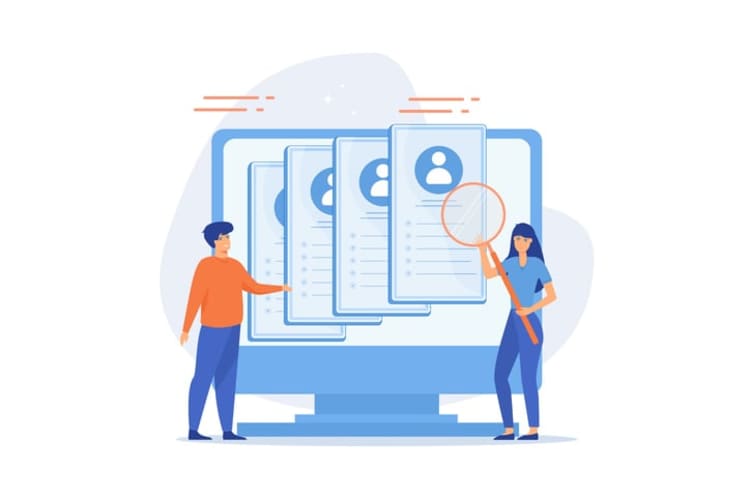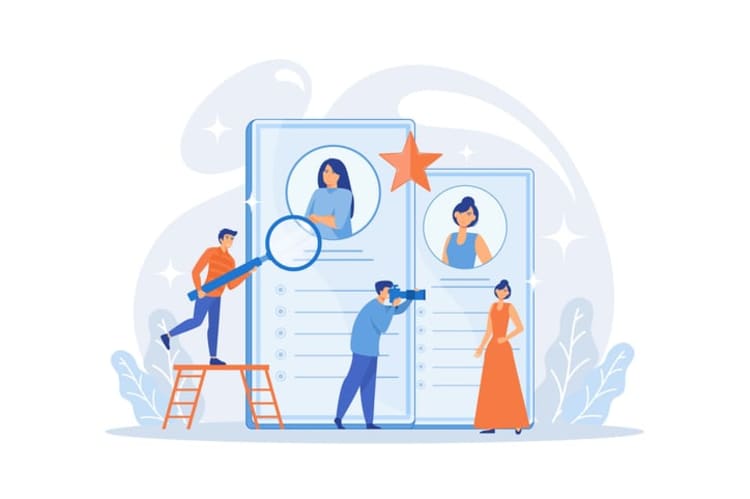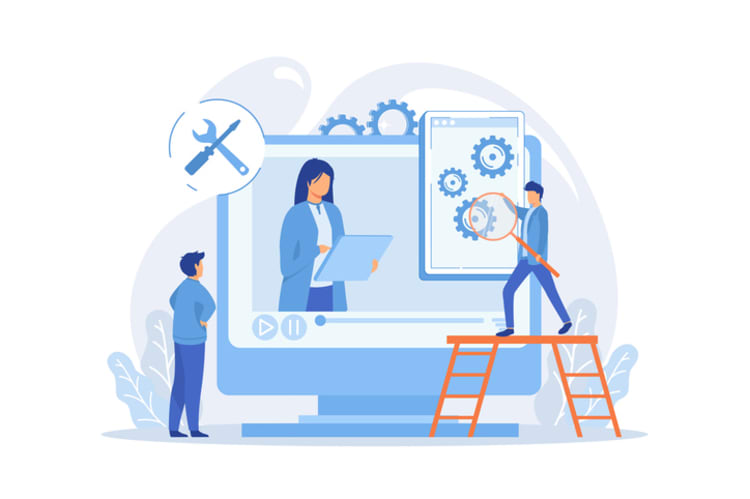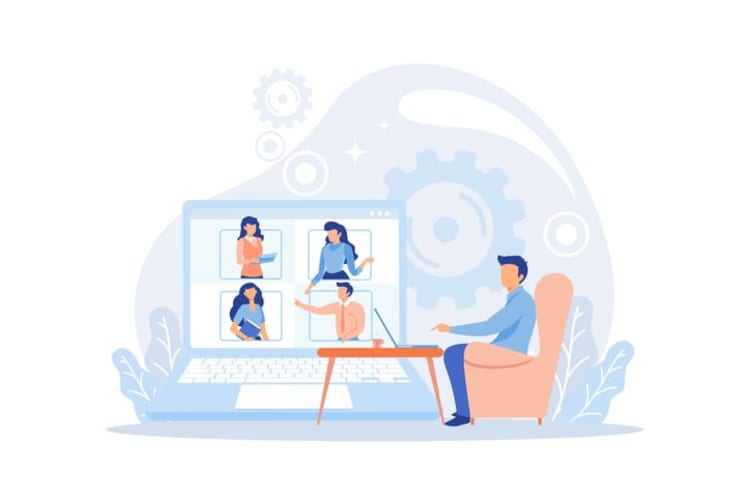Curious about what goes on in the world of human resources? This department plays a vital role in managing employees and ensuring state and federal regulations compliance. From recruiting and hiring to training and benefits, HR takes care of employees' every need so that they can focus on doing their best work.
The HR team is instrumental in shaping the employee experience. According to McKinsey research, organizations that prioritize a positive employee experience facilitated by HR are 1.3 times more likely to report organizational outperformance. This became even more important throughout the pandemic as HRs worked to build team morale and positive mindsets.
Therefore, by leveraging human talents effectively, HR can make a real difference in the bottom line. This article will explore what human resources is, what it does, and all the important aspects of the human resource role. So, buckle up, and let's dive in!
What is human resources?
Human resources is a crucial organizational function that oversees the management of a company's workforce, encompassing tasks such as recruitment, hiring, onboarding, training, termination, and employee benefits administration.
The origins of HR can be traced back to the 18th century in England when the Guilds and Family Officers system began delegating roles due to expanding operations.
Over the years, HR has evolved significantly, with key milestones such as:
- Industrial Revolution (19th century)
- Trade Union Movement (Close to the 19th century)
- Social Responsibility (beginning of the 20th century)
- Scientific Management (1900-1920s)
- Human Relations (1930-1950s)
- Behavioral Science (1950-1960s)
Advancements in technology, such as HR analytics, have further revolutionized HR practices, enabling professionals to make data-driven decisions and optimize workforce management. The core functions of HR include:
- Employee recruitment scheduling: Identifying job vacancies, creating job descriptions, posting job openings, and screening resumes.
- Payroll: Calculating employee salaries and wages, withholding taxes and other deductions, and issuing paychecks.
- Benefits administration: Managing employee benefits such as health insurance, retirement plans, and paid time off.
- Internal relations: Overseeing conflict resolution, performance management, and employee engagement.
- Employee training: Identifying needs, developing programs, and delivering training sessions.
- Compliance and safety: Ensuring the organization adheres to labor laws and regulations.
Overall, HR plays a crucial role in managing an organization's most valuable asset — its people — and ensuring they are taken care of in a beneficial, legal, and safe manner.

What does human resources do?
HR is vital to managing staff and keeping things running smoothly at work. So, here are the roles and responsibilities of the human resources department.
- Recruitment and Selection: HR is responsible for attracting, interviewing, and selecting suitable candidates for open positions.
- Training and Development: HR identifies employee skill gaps, designs and delivers training programs, and offers opportunities for professional growth.
- Performance Management: HR monitors employee performance, sets goals, and provides feedback through regular evaluations.
- Employee Relations: HR fosters a positive work environment by resolving conflicts, promoting open communication, and addressing employee concerns. They also organize events to encourage team building and maintain a positive organizational culture.
- Compensation and Benefits: HR ensures fair and competitive compensation packages, including salary, bonuses, and benefits such as health insurance and retirement plans.
Legal Compliance: HR stays updated on labor laws and regulations, ensuring the company remains compliant.

What is human resource management?
Human resource management is a crucial aspect of any organization, encompassing a strategic and coherent approach to managing people in a way that contributes to a competitive advantage.
HRM covers a range of functions, including HR planning, recruitment, selection, job analysis, productivity management, compensation, benefits, training, and development.
Additionally, HRM plays a vital role in the overall strategic management of a company by aligning HRM strategies with business objectives, a process known as Strategic HRM. Unlike traditional HRM, SHRM focuses on integrating HR activities with organizational goals to achieve better results.
Several HRM models and theories have been developed to guide HR professionals, such as:
The Harvard Model of HRM
The Harvard Model of HRM emphasizes the importance of situational factors in determining HR policies and practices and provides a practical framework for HR planning. The model includes four key components: situational factors, stakeholder interests, HR policy choices, and HR outcomes. The model suggests that HR policies and practices should be designed according to an organization's unique situational factors, including business strategy, culture, and environment, to achieve the desired HR outcomes.
Guest Model
The Guest model focuses on employee commitment and its impact on organizational performance. It suggests that employee commitment can be achieved through HR practices that lead to mutual gains for employees and employers. These practices include internal communication, teamwork, and employee development.
The Warwick Model
The Warwick Model highlights the importance of strategic integration. This model takes cognizance of business strategy and HR practices (as in the Guest model), the external and internal context (unlike the Guest model) in which these activities take place, and the process by which such changes take place, including interactions between changes in both context and content. It stresses the need for HR management to be integrated with other aspects of strategic planning to become a source of sustained competitive advantage.
Other human resource theories include cultural, institutional, human relations, organization life cycle, role behavior, resource dependency, and transaction cost theories. They provide insights into the impact of management practices and structures on employee behavior.
Real-life success stories demonstrating effective HRM practices' power include that of AXA Affin General Insurance, which leverages its strengths to maintain high employee engagement. On the other hand, Credit Suisse implemented a predictive algorithm to identify employees at risk of quitting, allowing the company to address issues proactively.
Overall, organizations can significantly improve their performance and productivity by incorporating effective HRM practices and leveraging relevant models and theories.

What is a human resource manager?
According to the Bureau of Labor Statistics, Human Resource Managers are responsible for recruiting, interviewing, hiring, and onboarding employees.
HR Managers ensure job descriptions comply with all local, state, and federal regulations. They also manage employee relations by addressing demands, grievances, or other issues. Plus, HRM develops and implements HR strategies and initiatives aligned with the overall business strategy.
Qualifications for this role include having 3+ years of experience in human resources or employee recruitment, exceptional communication and interpersonal skills, and an ethical mindset.
Key responsibilities include:
- Developing and implementing HR strategies aligned with business strategy
- Managing the recruitment and selection process
Essential skills and competencies:
- Excellent verbal and written communication
- Strong interpersonal skills
- Ability to work independently and under pressure
- Adaptability to work with diverse organizational levels
- Time management and problem-solving abilities
Human Resource Managers significantly impact organizational success by contributing to employee satisfaction, productivity, and performance. They can also provide organizations with a clear competitive advantage.
According to Forbes, HR is essential for attracting and retaining top talent, and organizations with a positive employee experience are 1.3 times more likely to outperform competitors. Therefore, the interplay between HRM elements and leadership attributes affects various organizational factors, making HR Managers indispensable for overall success.

HR trends and challenges
In today's rapidly evolving business landscape, organizations must adapt to emerging HR trends and tackle new challenges to remain competitive.
Some of the most influential factors shaping the HR landscape include:
- Technological Advancements in HR: Cutting-edge technology is revolutionizing the HR domain, enabling data-driven decision-making, automating routine tasks, and fostering better communication. These innovations streamline recruitment, performance management, and employee engagement, driving efficiency and productivity.
- Diversity, Equity, and Inclusion: Embracing diversity and fostering an inclusive environment has become a priority for businesses worldwide. Hence, companies that cultivate a culture of equity and inclusion benefit from enhanced creativity, innovation, and employee satisfaction.
- Remote Work and the Gig Economy: The rise of remote work and the gig economy is transforming how organizations manage their workforce. Thus, by adapting to these flexible work arrangements, businesses can tap into a global talent pool and optimize costs while offering employees work-life balance.
- Employee Well-being and Mental Health: Organizations increasingly recognize the importance of employee well-being and mental health. As such, companies can boost employee morale, reduce turnover, and enhance overall performance by implementing supportive policies and offering resources.
By embracing these trends and addressing their challenges, organizations can navigate the complexities of the modern workplace and build a resilient, future-ready workforce.

The future of HR in a changing workplace landscape
In summation, HR plays a vital role in modern organizations, handling essential functions such as hiring, training, employee retention, and workplace regulation compliance. And as the business landscape evolves with technological advancements and increasing workforce diversity, HR professionals must adapt and innovate to ensure continued success.
Virtual office platforms, for example, promote flexibility and synchronous communication, fostering a great work-life balance and supporting the office of the future.
So, by embracing emerging trends and addressing challenges, HR will continue to significantly impact organizational success, ultimately shaping the future of work.
Check out our other blog pages today for more great tips to help you become a better HR Manager.
FAQs on human resources
One of the significant challenges facing human resource managers today is managing an increasingly diverse workforce with different values, beliefs, and attitudes toward work. HR managers must find ways to accommodate the needs of an increasingly multicultural workforce while fostering an inclusive work environment.
Human resources refer to the department of an organization responsible for managing everything related to employees, such as recruiting, hiring, training, performance management, employee relations, compensation, and benefits.
A human resources manager oversees an organization's entire human resources department, including employee recruitment, performance management, employee relations, compensation, and benefits. HR managers typically have a bachelor's degree in human resources or a related field and several years of experience managing a team. They play a crucial role in managing an organization's most valued asset — its people — and ensuring they are taken care of in a beneficial, legal, and safe manner.





